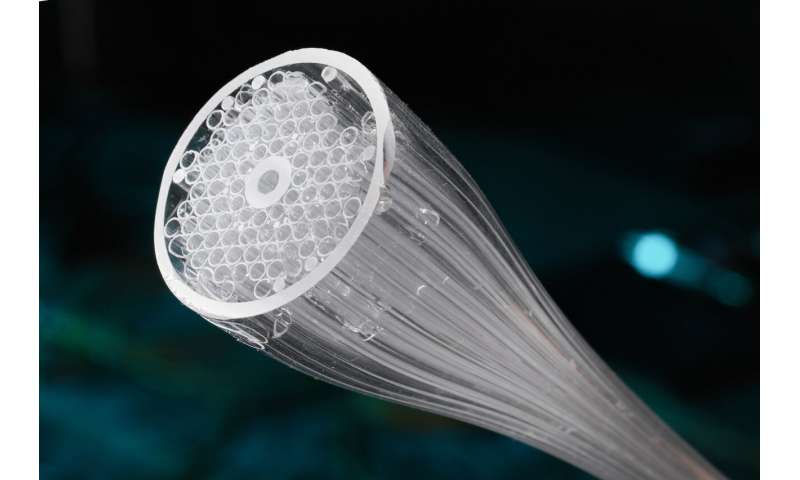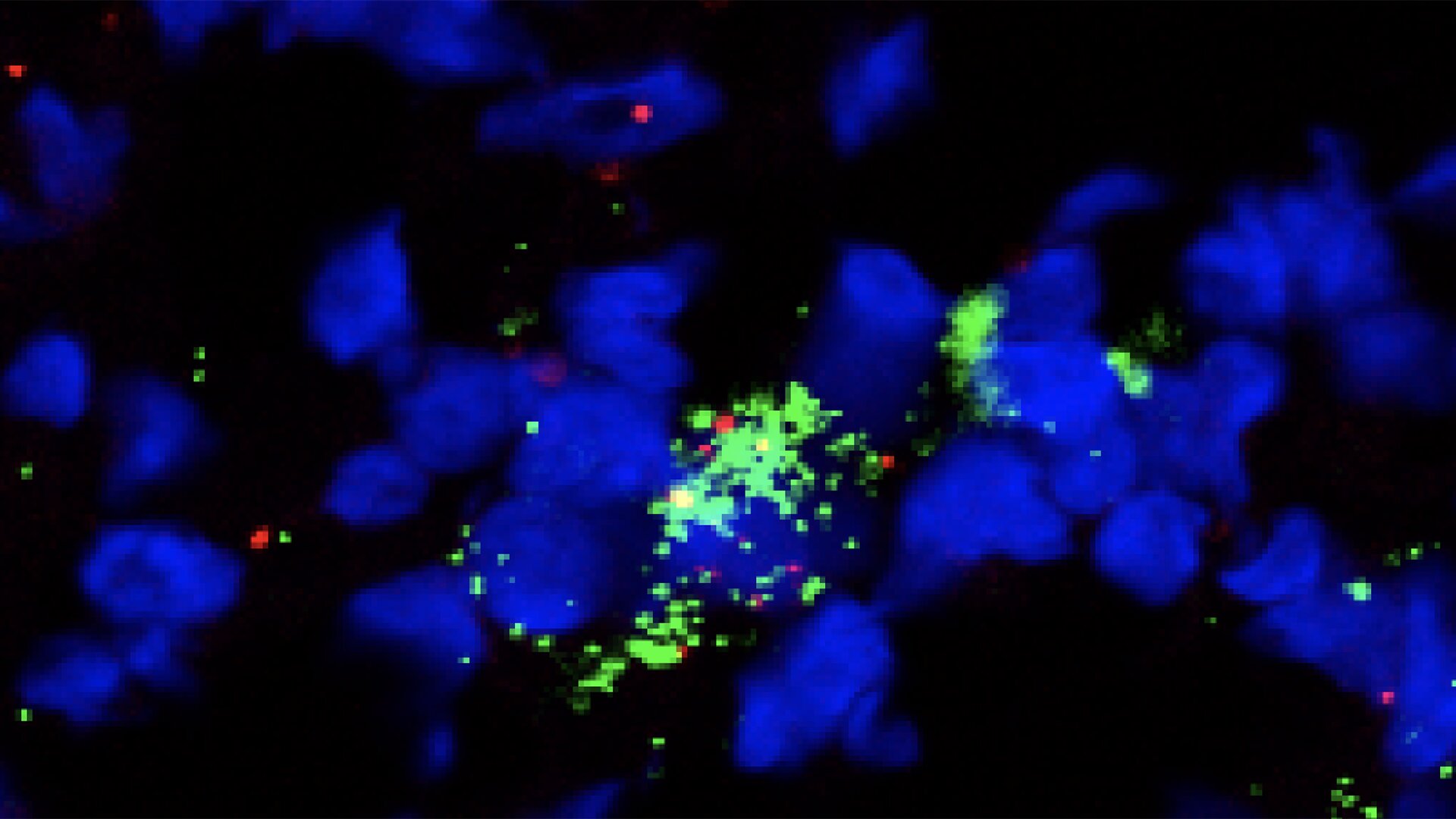#Using air to amplify light
“#Using air to amplify light”

In a promising breakthrough for the future of communications, EPFL researchers have developed a technology that can amplify light in the latest hollow-core optical fibers.
“The idea had been going around my head for about 15 years, but I never had the time or the resources to do anything about it,” says Luc Thévenaz, the head of the Fiber Optics Group in EPFL’s School of Engineering. Now, his lab has developed a technology to amplify light inside the latest hollow-core optical fibers.
Squaring the circle
Today’s optical fibers usually have a solid glass core with no air inside. Light can travel along the fibers but loses half of its intensity after 15 kilometers. It keeps weakening until it can hardly be detected at 300 kilometers. So to keep the light moving, it has to be amplified at regular intervals.
Thévenaz’s approach is based on new hollow-core optical fibers that are filled with either air or gas. “The air means there’s less attenuation, so the light can travel over a longer distance. That’s a real advantage,” says the professor. But in a thin substance like air, the light is harder to amplify. “That’s the crux of the problem: Light travels faster when there’s less resistance, but at the same time it’s harder to act on. Luckily, our discovery has squared that circle.”
From infrared to ultraviolet
So what did the researchers do? “We just added pressure to the air in the fiber to give us some controlled resistance,” explains Fan Yang, postdoctoral student. “It works in a similar way to optical tweezers—the air molecules are compressed and form into regularly spaced clusters. This creates a sound wave that increases in amplitude and effectively diffracts the light from a powerful source towards the weakened beam so that it is amplified up to 100,000 times.” Their technique therefore makes the light considerably more powerful. “Our technology can be applied to any type of light, from infrared to ultraviolet, and to any gas,” he explains. Their findings have just been published in Nature Photonics.
An extremely accurate thermometer
Going forward, the technology could serve other purposes in addition to light amplification. Hollow-core or compressed-gas optical fibers could, for instance, be used to make extremely accurate thermometers. “We’ll be able to measure temperature distribution at any point along the fiber. So if a fire starts along a tunnel, we’ll know exactly where it began based on the increased temperature at a given point,” says Flavien Gyger, Ph.D. student. The technology could also be used to create a temporary optical memory by stopping the light in the fiber for a microsecond—that’s ten times longer than is currently possible.
More information:
Intense Brillouin amplification in gas using hollow-core waveguides, Nature Photonics (2020). DOI: 10.1038/s41566-020-0676-z , www.nature.com/articles/s41566-020-0676-z
Using air to amplify light (2020, August 10)
retrieved 10 August 2020
from https://phys.org/news/2020-08-air-amplify.html
This document is subject to copyright. Apart from any fair dealing for the purpose of private study or research, no
part may be reproduced without the written permission. The content is provided for information purposes only.
If you want to read more Like this articles, you can visit our Science category.
if you want to watch Movies or Tv Shows go to Dizi.BuradaBiliyorum.Com for forums sites go to Forum.BuradaBiliyorum.Com




